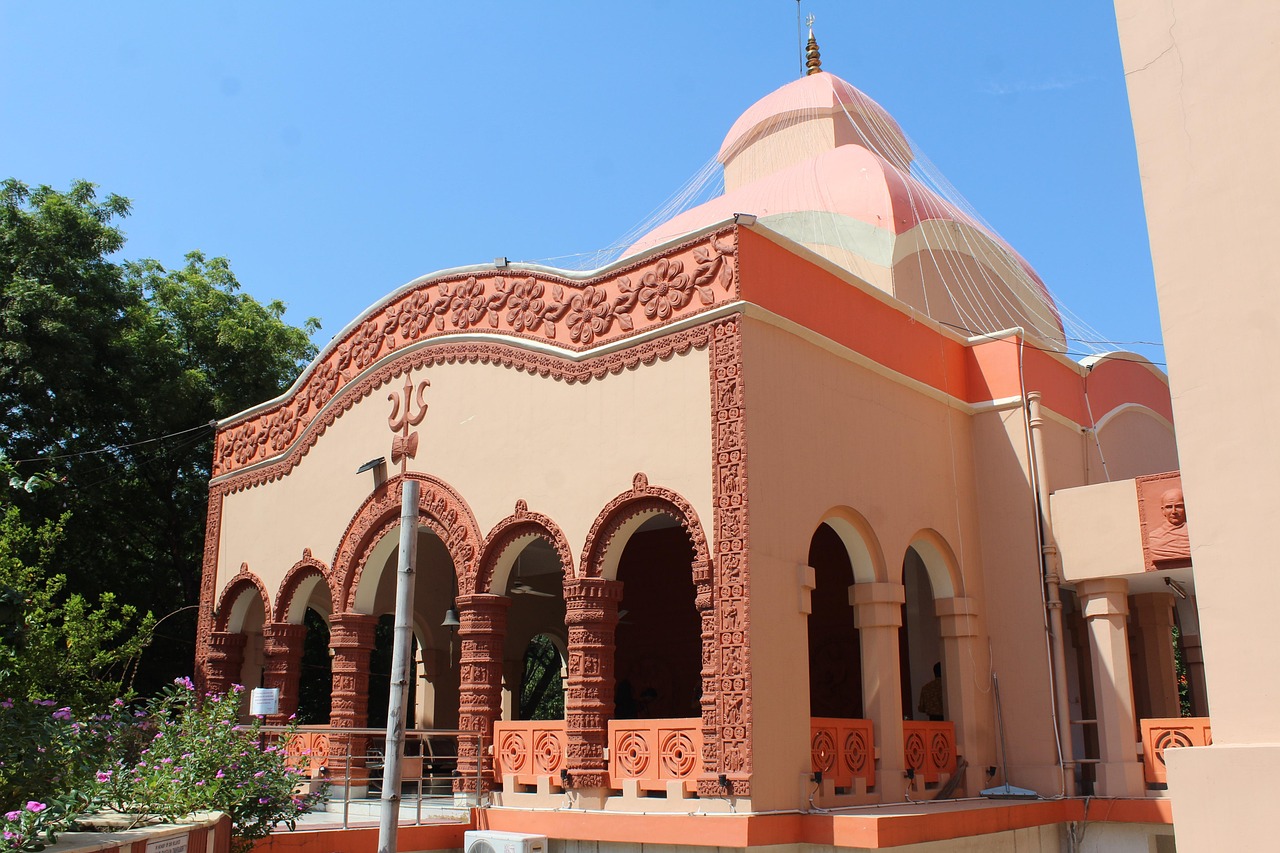This article delves into the top educational institutes in West Bengal, emphasizing their academic excellence, distinctive features, and significant contributions to the field of education. Discover the best options available for students aspiring to receive quality education in this culturally vibrant state.
1. Introduction to West Bengal’s Education Landscape
West Bengal is celebrated for its rich educational heritage, with institutions that have profoundly influenced the academic landscape of India. This state is home to numerous universities and colleges that not only uphold high educational standards but also foster a spirit of inquiry and innovation.
2. Top Universities in West Bengal
West Bengal hosts several prestigious universities renowned for their academic programs and research contributions. Below are some of the leading universities:
- University of Calcutta: Established in 1857, this university is one of India’s oldest. It offers a variety of programs with a strong emphasis on research and innovation.
- Jadavpur University: Known for its engineering, arts, and science programs, this university promotes an interdisciplinary approach, encouraging creativity and critical thinking among its students.
3. Premier Colleges in West Bengal
In addition to universities, West Bengal is home to many prestigious colleges offering specialized education:
- Presidency University: Founded in 1817, this institution is famous for its liberal arts and sciences programs, consistently ranking among India’s top colleges.
- St. Xavier’s College: Known for its holistic education and vibrant campus life, it attracts a diverse student body from various backgrounds.
4. Vocational and Technical Institutes
West Bengal also provides numerous vocational and technical institutes focused on skill development and practical training. These institutions play a crucial role in preparing students for the job market.
5. Government Initiatives in Education
The state government has launched various initiatives aimed at enhancing educational standards. Key policies focus on improving access and quality in education, ensuring that more students can benefit from quality learning experiences.
6. Challenges Facing Educational Institutes
Despite its strengths, the educational system in West Bengal faces challenges such as funding shortages, infrastructure issues, and disparities in access to quality education. Addressing these challenges is essential for future growth.
7. Future of Education in West Bengal
The future of education in West Bengal appears promising, with ongoing reforms and innovations. Trends indicate a shift towards more inclusive and technology-driven educational practices, which will likely enhance the overall quality of education.
8. Conclusion
West Bengal’s educational institutes are pivotal in shaping the future of students. By blending tradition with modernity, they continue to excel in providing quality education and nurturing talent, ensuring that students are well-prepared for the challenges of tomorrow.

1. Introduction to West Bengal’s Education Landscape
West Bengal is a state in eastern India that has long been recognized for its profound commitment to education. With a history that dates back centuries, it has produced some of the most prestigious educational institutions in the country, significantly influencing India’s academic landscape. This section delves into the rich educational heritage of West Bengal, highlighting its historical significance and ongoing dedication to fostering knowledge.
The state’s educational journey began in the early 19th century, marked by the establishment of institutions that aimed to blend traditional learning with modern educational practices. West Bengal’s educational institutes have played a crucial role in shaping the intellectual and cultural fabric of the nation. From the famous University of Calcutta to Presidency University, these institutions have been at the forefront of academic excellence.
- Historical Significance: West Bengal has been a melting pot of ideas, where renowned thinkers and reformers like Raja Ram Mohan Roy and Swami Vivekananda emerged, advocating for educational reforms.
- Commitment to Education: The state government has continually invested in education, ensuring access to quality learning for all. Initiatives aimed at improving infrastructure and resources reflect this commitment.
- Rich Cultural Influence: The diverse cultural heritage of West Bengal enriches its educational landscape, promoting a holistic approach to learning that encompasses arts, science, and humanities.
In conclusion, West Bengal’s educational landscape is not just about institutions; it embodies a rich legacy of learning and innovation. The state’s unwavering commitment to education continues to inspire generations, making it a vital contributor to India’s academic success.

2. Top Universities in West Bengal
The Best Educational Institutes in West Bengal
This article explores the top educational institutes in West Bengal, highlighting their academic excellence, unique features, and contributions to education. Discover the best options for students seeking quality education in this vibrant state.
1. Introduction to West Bengal’s Education Landscape
West Bengal boasts a rich educational heritage, with institutions that have shaped the academic landscape of India. This section provides an overview of the state’s commitment to education and its historical significance.
Several universities in West Bengal are renowned for their academic programs and research contributions. This section highlights the leading universities, their specialties, and what makes them stand out in the field of higher education.
- University of Calcutta
Established in 1857, the University of Calcutta is one of the oldest universities in India. It offers a wide range of programs, emphasizing research and innovation. The university is recognized for its rigorous academic standards and vibrant campus life.
- Jadavpur University
Known for its engineering, arts, and science programs, Jadavpur University adopts an interdisciplinary approach that fosters creativity and critical thinking among students. Its commitment to academic excellence makes it a top choice for aspiring scholars.
- Presidency University
Founded in 1817, Presidency University is celebrated for its liberal arts and sciences programs. It consistently ranks among the top colleges in India, attracting students with its prestigious faculty and innovative curriculum.
- St. Xavier’s College
St. Xavier’s College is renowned for its holistic education approach, emphasizing character development alongside academic learning. The vibrant campus life and diverse student community make it a popular choice for many.
3. Conclusion
West Bengal’s universities are pivotal in shaping the educational landscape of India. With a blend of tradition and modernity, these institutions continue to excel in providing quality education and fostering talent.
2.1. University of Calcutta
The University of Calcutta, founded in 1857, stands as a beacon of academic excellence and is recognized as one of the oldest universities in India. This prestigious institution has played a significant role in shaping the educational landscape of the country, fostering a culture of research and innovation that continues to thrive today.
With a diverse array of programs spanning the fields of arts, science, commerce, and technology, the University of Calcutta caters to a broad spectrum of academic interests. It offers undergraduate, postgraduate, and doctoral programs that are designed to equip students with the necessary skills and knowledge to excel in their respective fields.
| Program Type | Duration | Specializations |
|---|---|---|
| Undergraduate | 3 years | BA, BSc, BCom |
| Postgraduate | 2 years | MA, MSc, MCom |
| Doctoral | Variable | PhD in various disciplines |
The university’s commitment to research is evident through its numerous research centers and collaborations with various national and international institutions. Students are encouraged to participate in innovative projects, contributing to significant advancements in their fields. The university has also produced a remarkable list of notable alumni, including Nobel laureates and influential scholars, further solidifying its reputation as a leading educational institution.
In conclusion, the University of Calcutta not only upholds a rich tradition of academic excellence but also embraces modern educational practices. Its emphasis on innovation and research ensures that it remains at the forefront of higher education in India, preparing students to meet the challenges of the future.
2.1.1. Notable Alumni
Notable Alumni of the University of Calcutta
The University of Calcutta has a rich legacy of producing individuals who have made significant contributions across various fields. Its alumni include a host of Nobel laureates and influential thinkers, reflecting the university’s profound impact on both national and global scales.
- Rabindranath Tagore – The first non-European to win the Nobel Prize in Literature in 1913, Tagore’s literary works and philosophy have left an indelible mark on global literature.
- Amartya Sen – Awarded the Nobel Prize in Economic Sciences in 1998, Sen is renowned for his work on welfare economics and social choice theory, influencing economic policies worldwide.
- Vikram Sarabhai – Often regarded as the father of the Indian space program, Sarabhai’s vision and leadership paved the way for India’s advancements in space technology.
- Sunil Gangopadhyay – A celebrated poet and novelist, Gangopadhyay’s contributions to Bengali literature have earned him numerous accolades and a lasting legacy.
- Dr. B.C. Roy – An eminent physician and the second Chief Minister of West Bengal, Roy was honored with the Bharat Ratna for his contributions to medicine and public service.
These distinguished alumni exemplify the university’s commitment to academic excellence and societal impact. Their achievements not only enhance the university’s reputation but also inspire current and future students to strive for greatness.
In conclusion, the University of Calcutta stands as a beacon of educational excellence, and its notable alumni continue to influence various sectors, making significant strides that resonate globally.
2.1.2. Research Opportunities
Research Opportunities at the University of Calcutta
The University of Calcutta stands as a beacon of academic excellence and innovation, providing students with a multitude of research opportunities that span various disciplines. As one of the oldest universities in India, it has a rich legacy of fostering intellectual growth and creativity.
At the heart of the university’s mission is a commitment to research-driven education. Students are encouraged to engage in innovative projects that not only enhance their academic experience but also contribute to societal advancement. The university offers a range of facilities and resources to support research initiatives, including:
- State-of-the-art laboratories: Equipped with the latest technology, these labs provide students with hands-on experience in their fields of study.
- Interdisciplinary collaboration: The university promotes collaboration across different departments, allowing students to work on projects that integrate various fields of study.
- Access to funding: Various grants and scholarships are available for students pursuing research, enabling them to explore their interests without financial constraints.
- Mentorship programs: Faculty members, many of whom are leading experts in their fields, provide guidance and support to students, helping them navigate the complexities of research.
Moreover, the university regularly hosts workshops and seminars where students can present their findings, network with professionals, and gain valuable feedback. This exposure not only enhances their research skills but also prepares them for future careers in academia and industry.
In conclusion, the University of Calcutta is dedicated to nurturing the next generation of researchers and innovators. Its comprehensive approach to research opportunities equips students with the tools they need to succeed in an increasingly competitive world.
2.2. Jadavpur University
Jadavpur University stands as a beacon of academic excellence in West Bengal, particularly renowned for its diverse programs in engineering, arts, and science. Established in 1955, the university has consistently demonstrated a commitment to fostering an interdisciplinary approach that encourages creativity and critical thinking among its students.
The university’s engineering programs are particularly noteworthy, blending theoretical knowledge with practical application. Students engage in hands-on projects that prepare them for real-world challenges, ensuring they are not only well-versed in their fields but also equipped with the necessary skills to innovate.
In the realm of arts and humanities, Jadavpur University offers a rich curriculum that emphasizes cultural studies, literature, and social sciences. This fosters a holistic understanding of societal dynamics, encouraging students to think critically about the world around them. The faculty comprises distinguished scholars who are committed to guiding students through their academic journeys.
Moreover, the university’s science programs are designed to push the boundaries of knowledge. With state-of-the-art laboratories and research facilities, students have the opportunity to engage in groundbreaking research that contributes significantly to various scientific fields.
Jadavpur University also promotes collaborative learning through various interdisciplinary projects, allowing students from different faculties to work together. This not only enhances their learning experience but also prepares them for the collaborative nature of modern workplaces.
In conclusion, Jadavpur University is more than just an educational institution; it is a vibrant community that nurtures talent and inspires students to become leaders in their respective fields. Its commitment to interdisciplinary education ensures that graduates are well-prepared to tackle the challenges of the future.

3. Premier Colleges in West Bengal
West Bengal is renowned for its rich educational landscape, particularly its prestigious colleges that offer specialized programs in various fields. These institutions not only provide quality education but also foster holistic development among students. Below, we explore some of the top colleges in West Bengal, highlighting their unique features and programs.
- Presidency University
Founded in 1817, Presidency University is celebrated for its liberal arts and sciences programs. It is consistently ranked among the top colleges in India, known for its rigorous academic standards and vibrant campus life. The university emphasizes research and critical thinking, equipping students with the skills necessary for success in their respective fields.
- St. Xavier’s College
St. Xavier’s College, established in 1860, is a leading institution that focuses on holistic education. With a strong emphasis on ethics and social responsibility, it attracts students from diverse backgrounds. The college offers a variety of undergraduate and postgraduate programs, along with numerous extracurricular activities that promote personal growth.
- Jadavpur University
Jadavpur University is known for its engineering, arts, and science programs. The college’s interdisciplinary approach encourages creativity and critical thinking among students. With a strong focus on research and innovation, Jadavpur University prepares its students to excel in both academic and professional realms.
- Lady Brabourne College
Established in 1939, Lady Brabourne College is one of the premier institutions for women’s education in West Bengal. The college is known for its excellent faculty and a wide range of programs in arts and sciences. It aims to empower women through education, fostering leadership and self-reliance.
- Heritage Institute of Technology
This institute specializes in engineering and technology programs, offering a modern curriculum that meets industry standards. With state-of-the-art facilities and a strong placement record, Heritage Institute of Technology prepares students for successful careers in various engineering fields.
In conclusion, the premier colleges in West Bengal not only provide quality education but also play a crucial role in shaping the future of their students. With a diverse range of programs and a commitment to excellence, these institutions are essential pillars of the state’s educational framework.
3.1. Presidency University
Presidency University, established in 1817, holds a prestigious position in the realm of higher education in India. Renowned for its liberal arts and sciences programs, it consistently ranks among the top colleges in the country. The university’s commitment to academic excellence, innovative teaching methods, and a vibrant campus life makes it a favored choice for students.
This esteemed institution offers a diverse range of undergraduate and postgraduate programs, focusing on a holistic education that nurtures critical thinking and creativity. The faculty comprises distinguished scholars and industry experts who guide students through rigorous academic challenges.
Unique Features of Presidency University
- Interdisciplinary Approach: The university encourages students to explore various fields, fostering an environment where knowledge transcends traditional boundaries.
- Research Opportunities: With state-of-the-art facilities and funding for projects, students are given ample opportunities to engage in groundbreaking research.
- Global Exposure: Collaborations with international universities provide students with a global perspective, enhancing their educational experience.
Notable Alumni
Presidency University has produced a remarkable list of alumni who have made significant contributions across various fields, including politics, literature, and science. Their achievements reflect the university’s legacy of nurturing talent and leadership.
Conclusion
In summary, Presidency University stands out as a beacon of academic excellence in West Bengal. Its rich history, commitment to quality education, and vibrant campus culture make it an ideal choice for aspiring students seeking a transformative educational experience.
3.2. St. Xavier’s College
St. Xavier’s College stands out as one of the premier educational institutions in West Bengal, renowned for its unwavering commitment to holistic education and a vibrant campus life that fosters personal and academic growth. Established in 1860, the college has a long-standing tradition of excellence, attracting students from a myriad of backgrounds, cultures, and regions.
The college offers a diverse range of undergraduate and postgraduate programs across various disciplines, including arts, science, and commerce. This academic diversity not only enhances the learning experience but also prepares students for the complexities of the modern world. With a strong emphasis on critical thinking and creativity, St. Xavier’s College encourages students to engage actively in their education.
One of the unique features of St. Xavier’s College is its vibrant campus life. The college hosts numerous extracurricular activities, including cultural festivals, sports events, and community service initiatives. These activities not only enrich the student experience but also promote a sense of belonging and camaraderie among students. The college’s commitment to social responsibility is evident through its various outreach programs aimed at uplifting underprivileged communities.
Moreover, the faculty at St. Xavier’s College comprises experienced educators and industry professionals who are dedicated to mentoring students and facilitating their academic journeys. The college also boasts state-of-the-art facilities, including modern classrooms, laboratories, and libraries, ensuring that students have access to the resources they need to excel.
In conclusion, St. Xavier’s College is more than just an educational institution; it is a nurturing ground for future leaders and innovators. With its strong emphasis on holistic education, commitment to community service, and vibrant campus life, it continues to attract and inspire students from all walks of life.

4. Vocational and Technical Institutes
West Bengal is home to a myriad of vocational and technical institutes that are dedicated to enhancing skill development and providing practical training. These institutes play a crucial role in preparing students for the workforce by equipping them with the necessary skills and knowledge in various fields. Below, we explore some of the most esteemed options available for students seeking technical education in West Bengal.
- Netaji Subhas Technical College: Located in Kolkata, this institute offers a range of diploma and degree programs in engineering and technology. With a focus on hands-on training, it prepares students for careers in industries such as manufacturing and IT.
- Government Polytechnics: Spread across the state, these polytechnics provide diploma courses in multiple disciplines, including civil, mechanical, and electrical engineering. They are known for their affordable education and strong industry connections.
- Institute of Hotel Management: Catering to the hospitality industry, this institute offers specialized programs in hotel management and catering technology. Students gain practical experience through internships and workshops.
- West Bengal State Council of Technical Education: This governing body oversees various technical institutes in the state, ensuring quality education and skill development. It also provides resources and support for students and faculty alike.
These institutes not only focus on academic excellence but also emphasize practical training and industry exposure. By collaborating with businesses, they help students transition smoothly from education to employment. Furthermore, many institutes offer placement assistance, ensuring that graduates find suitable job opportunities in their respective fields.
In conclusion, West Bengal’s vocational and technical institutes are integral to the state’s educational landscape. They provide essential training and skill development, making them a valuable choice for students looking to enhance their career prospects.

5. Government Initiatives in Education
Government Initiatives in Education
The state government of West Bengal has launched a series of strategic initiatives aimed at enhancing educational standards across various levels. These initiatives are designed to improve both access to education and the overall quality of learning experiences for students.
- Universal Access to Education: One of the primary goals is to ensure that every child has access to quality education. The government has launched programs to provide free textbooks, uniforms, and mid-day meals to students from economically disadvantaged backgrounds.
- Infrastructure Development: Significant investments have been made to improve school infrastructure. This includes the construction of new classrooms, libraries, and laboratories, as well as upgrading existing facilities to create a conducive learning environment.
- Teacher Training Programs: Recognizing that quality teaching is crucial, the government has implemented comprehensive teacher training programs. These initiatives focus on enhancing teaching methodologies and incorporating modern educational technologies.
- Digital Education Initiatives: With the rise of technology, the government has embraced digital learning. Initiatives like e-learning platforms and digital classrooms have been introduced to make education more accessible and engaging for students.
- Scholarship Programs: To encourage higher education, various scholarship programs have been established to support students from underprivileged backgrounds, enabling them to pursue their academic aspirations without financial burden.
These initiatives reflect the government’s commitment to fostering an inclusive and high-quality educational system. By addressing the challenges faced by students and educational institutions, West Bengal aims to create a robust framework that supports learning and development for all.
In conclusion, the government’s multifaceted approach to improving educational standards in West Bengal is paving the way for a brighter future for students. With ongoing efforts and reforms, the state’s education system is poised for significant advancements.

6. The Role of Private Institutions
Private educational institutions are integral to the educational framework of West Bengal, complementing public education by providing diverse learning opportunities and specialized programs. Their presence has significantly influenced the academic landscape, catering to a variety of student needs and preferences.
1. Enhancing Accessibility and Choice
One of the primary contributions of private institutions is the enhancement of accessibility to quality education. With a wide range of courses and programs, these institutions offer students more choices, allowing them to pursue their interests and career aspirations. For instance, many private colleges specialize in fields such as engineering, business management, and health sciences, which may not be as widely available in public institutions.
2. Innovation and Curriculum Development
Private institutions are often more agile in adapting to changing educational demands. They frequently update their curricula to reflect current industry trends, ensuring that students are equipped with relevant skills. This focus on innovation not only enhances the learning experience but also prepares graduates for the competitive job market.
3. Quality of Education
Many private institutions maintain a high standard of education through rigorous selection processes for faculty and students. They often invest in state-of-the-art facilities and resources, which contribute to a conducive learning environment. Furthermore, smaller class sizes typically found in private institutions allow for more personalized attention and support from instructors.
4. Collaboration with Industries
Private educational institutions frequently establish partnerships with various industries, providing students with practical exposure and internship opportunities. This collaboration not only enhances the students’ learning experience but also bridges the gap between theoretical knowledge and real-world application.
5. Challenges and Criticisms
Despite their contributions, private institutions face criticisms regarding tuition fees and accessibility for economically disadvantaged students. However, many institutions are implementing scholarship programs and financial aid options to address these concerns, striving to create a more inclusive educational environment.
In conclusion, private educational institutions play a vital role in West Bengal’s educational ecosystem, offering diverse options, fostering innovation, and enhancing the overall quality of education. Their contributions are essential in complementing public education and shaping the future of students in the state.

7. Challenges Facing Educational Institutes
Challenges Facing Educational Institutes in West Bengal
West Bengal’s education system, while rich in history and tradition, is currently navigating through a myriad of challenges that hinder its effectiveness. This section delves into the key issues affecting educational institutes across the state, focusing on funding, infrastructure, and access to quality education.
| Challenge | Description |
|---|---|
| Funding | The financial resources allocated to educational institutions often fall short, impacting their ability to maintain quality standards and invest in new technologies. |
| Infrastructure | Many schools and colleges suffer from inadequate facilities, including outdated classrooms, insufficient laboratories, and lack of access to digital resources. |
| Access to Quality Education | Disparities in access to education, particularly in rural areas, result in a significant gap in educational outcomes between urban and rural students. |
Funding issues are particularly acute in government-run institutions, where budget constraints limit the scope of educational programs and the hiring of qualified staff. Without adequate funding, schools struggle to provide essential resources, ultimately affecting student learning.
Moreover, the infrastructure of many educational institutions is in dire need of improvement. Classrooms are overcrowded, and many lack basic amenities, making it challenging for teachers to deliver effective education. The absence of modern technology further exacerbates the situation, as students miss out on vital digital skills necessary for today’s job market.
Additionally, access to quality education remains a pressing issue. Despite various government initiatives aimed at improving educational access, students in remote areas still face significant barriers. This inequity leads to a situation where the quality of education received is often dependent on geographical location, perpetuating cycles of poverty and limiting opportunities for many.
In conclusion, addressing these challenges is crucial for the future of West Bengal’s education system. A collaborative effort from the government, private sector, and community stakeholders is essential to foster an environment where every student has the opportunity to succeed.

8. Future of Education in West Bengal
The future of education in West Bengal is set to be transformative, driven by a series of ongoing reforms and innovative practices. As the state embraces modern educational methodologies, it is poised to redefine its academic landscape in the coming years. This section delves into the emerging trends and predictions that are shaping the future of education in West Bengal.
- Emphasis on Technology Integration: Educational institutions are increasingly adopting technology to enhance learning experiences. This includes the use of smart classrooms, online learning platforms, and digital resources that provide students with access to a wealth of information.
- Focus on Skill Development: There is a growing recognition of the need for vocational training and skill development programs. Institutions are partnering with industries to create curriculums that meet the demands of the job market, ensuring that students are job-ready upon graduation.
- Inclusive Education Initiatives: The government is implementing policies aimed at promoting inclusive education. This includes special provisions for students with disabilities and efforts to ensure educational access for marginalized communities.
- Research and Innovation: West Bengal’s universities are increasingly focusing on research and innovation. Collaborations with international institutions and funding for research projects are expected to enhance the state’s academic reputation and attract talent.
- Environmental and Social Awareness: Educational programs are incorporating themes of sustainability and social responsibility. Students are being encouraged to engage in community service and environmental conservation efforts, fostering a sense of citizenship.
As these trends unfold, the educational landscape in West Bengal is likely to witness significant changes, making it more adaptable and responsive to the needs of students and society. With a commitment to continuous improvement and innovation, the future of education in West Bengal looks not only promising but also bright.

9. Conclusion
In conclusion, West Bengal’s educational institutes play a crucial role in shaping the future of students. These institutions successfully blend tradition and modernity, ensuring that students receive quality education while fostering their innate talents. The state’s rich educational heritage is reflected in its diverse offerings, from esteemed universities to specialized colleges and vocational training centers.
The commitment to excellence is evident in the achievements of institutions such as the University of Calcutta and Jadavpur University, which have produced numerous notable alumni and contributed significantly to research. Additionally, colleges like Presidency University and St. Xavier’s College emphasize holistic education, preparing students for the challenges of the modern world.
Furthermore, the state’s government initiatives aimed at enhancing educational standards demonstrate a proactive approach to overcoming challenges in the sector. By addressing issues such as funding and infrastructure, West Bengal is paving the way for a brighter future in education.
As we look ahead, the evolution of educational practices, coupled with the integration of technology, suggests that West Bengal will continue to be a beacon of academic excellence. The ongoing reforms and innovations indicate a promising future for students seeking knowledge and skills in this vibrant state.
In summary, West Bengal’s educational landscape is not only rich in history but also dynamic and forward-looking, providing students with the tools they need to excel in an increasingly competitive world.
Frequently Asked Questions
- What are the top universities in West Bengal?
The top universities in West Bengal include the University of Calcutta, Jadavpur University, and Presidency University. Each offers unique programs and has a strong reputation for academic excellence.
- How does vocational education in West Bengal compare to traditional universities?
Vocational education in West Bengal focuses on skill development and practical training, making it ideal for students looking to enter the workforce quickly. Traditional universities, on the other hand, emphasize theoretical knowledge and research.
- What initiatives has the government taken to improve education in West Bengal?
The West Bengal government has launched various initiatives aimed at enhancing educational standards, including scholarships, infrastructure development, and programs to improve access to quality education for all students.
- Are private educational institutions significant in West Bengal?
Yes, private educational institutions play a crucial role in West Bengal’s education system by offering diverse programs and contributing to the overall educational landscape, often complementing public institutions.
- What challenges do educational institutes in West Bengal face?
West Bengal’s educational institutes face challenges such as inadequate funding, infrastructure issues, and disparities in access to quality education, which can hinder the overall learning experience.
- What is the future of education in West Bengal?
The future of education in West Bengal looks promising with ongoing reforms, technological integration, and a focus on innovative teaching methods, paving the way for a more dynamic educational landscape.



























































